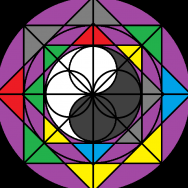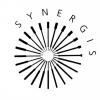Search the Community
Showing results for tags 'golden dawn'.
Found 2 results
-

Dragon/Tiger, Right/Left, Golden Dawn, Bagua Mirror, etc.
HuangDiNeiJing posted a topic in Esoteric and Occult Discussion
Hello! I have a question regarding the Dragon and the Tiger. The Azure-Wood-Dragon of the East and the White-Metal-Tiger of the West are associated with the LEFT and the RIGHT of the body, respectively. However, In the same way that Li/Fire is on the "left side" of the Preheaven Bagua and Kan/Water is on the "right", I wonder is there is intentional hermetic sealing of the information encoded in these diagrams.* *Grimoires and occult literature is notoriously loaded with purposeful misinformation. NOTE the intentional switching of the Swords and Wands elemental association of the Tarot by the Hermetic Order of the Golden Dawn in the early 20th century. This was to test initiates to see if they know the true association, rather than just taking it for granted. If you think about it - Swords would obviously correspond to Fire and Wands obviously to Air, rather than the other way around. Unfortunately, through the remainder of the 20th and into the 21st centuries we have fallen for the HOTGD's trick. It has occurred to me that the mirror is a recurrent motif in Daoist alchemy (The "Mirror for Compounding the Medicine", etc.). Could it be - as I believe - that we are not to read the Bagua as "facing" away from us, but "facing" towards us? Putting Li on our RIGHT sides and Kan on our LEFT? Yes, the Dragon constellation is in the East and the Tiger in the West. But what does this explicitly have to do with the body? The East (Dragon) is on your LEFT only if you are FACING SOUTH. If you are facing NORTH then the Dragon is on your RIGHT. The Dragon being Yang, I feel, should correspond with the RIGHT and not with the LEFT. We are used to North/South and Heaven/Earth being flipped in our alchemical cosmology... why not Left and Right? All this was spurred on by trying to find a banishing ritual that roughly matches the HOTGD's Lesser Banishing Ritual of the Pentagram. In my searching I came across this: https://freakassesoterica.wordpress.com/2017/04/08/taoist-banishing-ritual/ While I found this compelling, I also can't help but think for myself. I looked in Benebell Wen's Tao of Craft for an answer and it seems to lack left/right correspondences. Looking forward to your thoughts!! (P.S. This is my first post here. Go easy on me. ) -
Hi Tarot Bums, It is a feature of many Tarot decks that the 36 numbered Minor Arcana reflect the images and meanings traditionally attributed to the 36 decans of Astrology, even though this is not always obvious. The most prominent system for making the link is no doubt the one devised by the Hermetic Order of the Golden Dawn. It was integrated by both Aleister Crowley and (more disguisedly) Arthur Edward Waite in the design of their respective decks. But it is nowhere as prevalent as in the beautiful Liber T - Tarot of the Stars Eternal. That deck's Major Arcana and Court Cards are somewhat simplified versions of Crowley's Thoth cards, but what sets the Liber T apart is its reception of the decans' images as found in the Sublime Books, Liber Hermetis, Indian astrological tradition, Latin Picatrix, Agrippa's Three Books of Occult Philosophy, Giordano Bruno's De Umbris Idearum, as well as in the "Hall of the Months" in the beautiful Palazzo Schifanoia in Ferrara, Italy. It is noteworthy that there are many parallels between the images in all these systems, spread out through different times and cultures - notwithstanding the transmission that without a doubt occurred. But let's look at an example. The Two of Wands is attributed according to the Golden Dawn with the first decan of the Zodiac (the first ten degrees of Aries). What do the classical sources have to say on this decan? (We find them conveniently compiled in Austin Coppock great book 36 Faces - The History, Astrology and Magic of the Decans.) Liber Hermetis: "It is an armed sign, standing upright, walking, having the likeness of a man, standing on feet like claws and holding above his head a double-sided battle-axe with both hands." Birhat Jakata: "A man with white cloth around his waist, dark complexion, pretending to protect, fearful red eyes and a lifted axe." Latin Picatrix (the direct inspiration for the Golden Dawn's decan interpretations): "The image of a black man with a large and restless body, having red eyes and with an axe in his hand, girded in white cloth, and there is great value in this image. This is a face of strength, high rank and wealth without shame." Three Books of Occult Philosophy: "A black man, standing and dressed in white and girded, a large body, red eyes, and great strength, as if angry ... This image signifies and is made for boldness, strength, loftiness, and immodesty." Further, we want to consider what some of the pioneering Tarot books in more modern times tell us about the Two of Wands: Book T (this is the GD's outline for Tarot and foundation for the Liber T deck): "The Lord of Dominion ... Strength, domination, harmony of rule and of justice. Boldness, courage, fierceness, shamelessness, revenge, resolution, generous, proud, sensitive, ambitious, refined, restless, turbulent, sagacious withal, yet unforgiving and obstinate." The Book of Thoth (Aleister Crowley's treatise on his deck which the Liber T reproduces): "The background of this card shows the power of the planet Mars in his own sign Aries, the first of the Signs. It there represents Energy initiating a Current of Force. The pictorial representation is two Dorjes crossed. The Dorje is the Tibetan symbol of the thunderbolt, the emblem of celestial Power, but more in its destructive than its creative form. More, that is, in its earlier rather than its later form. For destruction may be regarded as the first step in the creative process. The virgin ovum must be broken in order to fertilize it. Fear and repulsion are therefore the primary reaction to the assault. Then, with understanding of the complete plan, willing surrender rejoices to co-operate.Six flames issue from the centre. This indicates the influence of the Sun, who is exalted in Aries. This is the creative Will." Crowley's design for the card mirrors its decan's meaning. Of course, this short introductory survey would be incomplete if we would neglect A. E. Waite's version of the card: Wikipedia tells us how this card is generally understood by contemporary Tarot readers: ""The image on the Rider-Waite deck shows us a wealthy merchant or noble, looking out at his territory, or perhaps for his ships that have set sail. He holds the world in his hands, symbolizing power." This reiterates at least some of the decan's attributions. Whereas Waite's own words - strongly based on popular interpretations and ever so cautious to avoid any violation of the author's oath of secrecy to the GD - are not very reminiscent of the card's decan: "Divinatory Meanings: Between the alternative readings there is no marriage possible; on the one hand, riches, fortune, magnificence; on the other, physical suffering, disease, chagrin, sadness, mortification. The design gives one suggestion; here is a lord overlooking his dominion and alternately contemplating a globe; it looks like the malady, the mortification, the sadness of Alexander amidst the grandeur of this world's wealth." By the way: This thread spins off a current discussion on the thread "Tarot Set for Advanced" and was suggested to me long ago by Nungali - thanks.
- 11 replies
-
- 3
-

-
- Archetypes
- Astrology
-
(and 5 more)
Tagged with:

